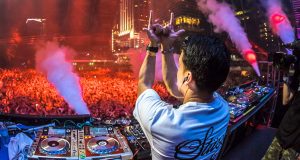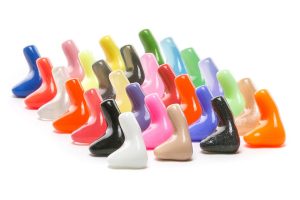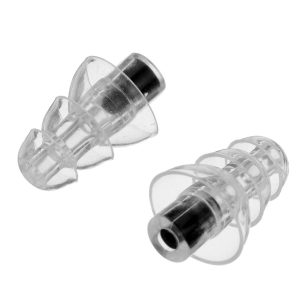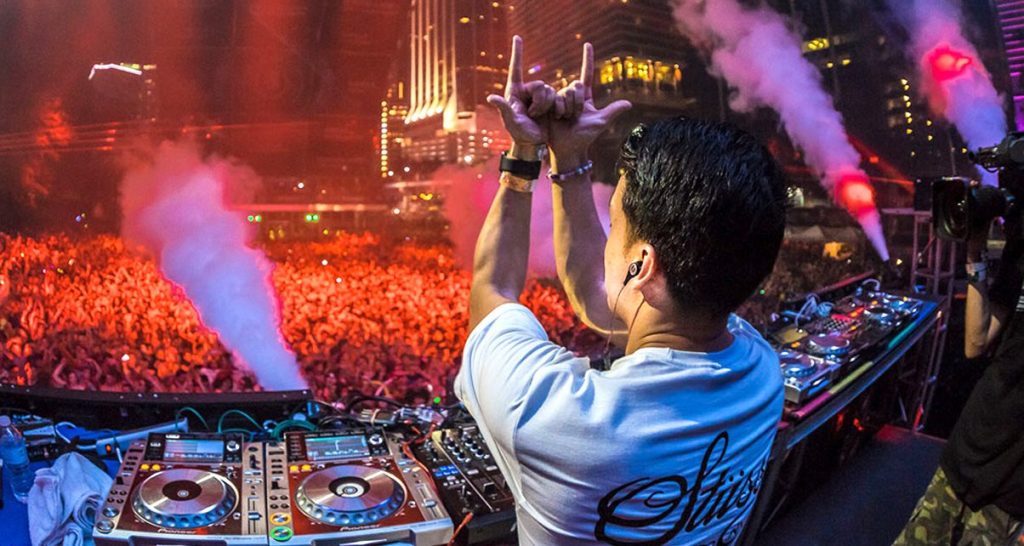
Protect Your Ears!
One of the most important things for any working DJ is to protect their hearing, but it is amazing just how many DJs don’t make any attempt at all to do so. This is especially strange when you realise that tinnitus is irreversible – once you damage your hearing, you are stuck with the damage forever (or until some futuristic treatment is invented!).
There are various ways to look after your hearing, at various costs.
One of the best decisions I ever took was to be a pretty early adopter of moulded ear plugs – I got my first set nearly 20 years ago, and in terms of value for money, they were a bargain. The price varies somewhat, but in the UK I have generally paid roughly £125-150 for a pair of moulded earplugs, including the chosen filter. For the kind I got, I found this in the USA – coming in at $185.
The procedure is fairly straightforward, and to my mind, quite a pleasant experience. The ear specialist takes a putty mixture and syringes it straight into your ears, with small piece of foam attached to a piece of string already in there, creating a perfect mould of your inner ear canal, which they can pull out using the string once it sets.

These are sent off to be turned into earplugs of whatever colour you choose – pro tip, pick a colour that you can find easily in a dark DJ booth if you put them down! I usually go for a bright yellow, and they have all sorts of options on a menu. You can also have your name written on the ear plugs, which is handy if you lose things!

They come with filters of varying strength – I’ve generally favoured 15db filters, as they take enough off to protect my ears, but not so much that it totally kills the experience. But sometimes in certain clubs/festivals you might want more protection, and sometimes at quieter gigs, 15db can be too much. So it can be useful to have different options if your budget stretches to that, and in many moulded ear plugs, the filters can be popped out and swapped around. Watch out for losing them though, as the actual filters are tiny! The main selling point of these is that the volume goes down, but the sound stays broadly the same, as they cut a very even range of frequencies out.
A huge benefit that I have noticed from using ear plugs, beyond the obvious reduction in volume, is the physical protection from people shouting in your ears. This is something most DJs have encountered plenty – drunk patron, or a friend, comes over to say something, leans in, then….. SCREAMS directly into your ear, which is can be genuinely painful, and incredibly harmful to your ears too. The earplugs above act as a physical barrier for the air pressure problem caused by that situation. I also find that it seems easier to have conversations in clubs etc when these are in – so much so that I tend to wear them to gigs, festivals, clubs etc.
I will not lie to you – it is more fun to DJ without them in. It takes a little while to get used to the change, and a first you might find it a bit unsettling, and not be sure about your EQing and volumes. You definitely have to watch out for turning the main speakers and monitor loads louder – cancelling out the benefit of the earplugs, and absolutely ruining the ears of everyone else in the booth or venue! Every so often take the earplugs out and check how things sound while you get used to playing with them in.
But the benefits are huge – you protect your hearing! No more EEEEEEEEEEeeeeeeeee…… whistling noise in your ears when you get back home from a gig! Tinnitus is no joke – my friend Eddy Temple-Morris recommended the place I got my plugs from, and also is an ambassador for a suicide prevention charity. Those two things are more linked than you would expect – plenty of people with bad tinnitus become suicidal, so take this stuff seriously! I highly recommend you Google your local ear specialist and get yourself properly protected. If you are in the UK – check out the Musicians Hearing Health Scheme – an incredible discount on top of the range hearing protection, plus a hearing test.
Cheaper Options
While I would definitely recommend you get the moulded earplugs, and would say that they are the best value for money you will ever spend as a DJ, if you simply can’t afford that, there are cheaper alternatives.
At the very basic level, there are those little foam ones – incredibly cheap, a quick look on Amazon and you can get 60 pairs for $11.99! There’s all sorts of colours and brands. Be aware – while these will reduce the volume somewhat, and provide the physical barrier for shouty people screaming in your ears, these are designed simply to block sound out – maybe for workers, or people trying to sleep better. They are not attenuated to be able to hear music at its best, and you will struggle to get your EQing right with these in!
I have tried out the Flare Isolate earplugs – while some people seem to rate them, I didn’t like them at all myself, as they seemed to just be a more expensive version of the above, blocking out plenty of sound, but flattening my hearing out in a way that made DJing incredibly weird.
Then there are these style plastic ones – quite a lot of companies make versions of these, and when I’ve lost moulded earplugs and had to wait for replacements, these have done a reasonable job as a cheap placeholder.

Depending on which ones you get, be careful with your headphones – some of them stick out a fair bit, and so you can end up getting an uncomfortable poke in the ear! They tend to be priced around £10-20, and the sound is acceptable with the ones I’ve used.
Other Tactics
Hearing loss is a funny thing – it can be an accumulation over time, or it can be brought on very suddenly by a single very loud event. Obviously, as DJs, we tend to be in very loud environments a lot.
One thing you might be able to do – if you are in a DJ booth with a proper monitor set-up, only turn the monitor up when you are actually using it (ie, cueing and mixing). Once you are done, turn it back down to zero. Then back up again for the next mix in a minute or two.
There’s a few benefits to this. Firstly, you are limiting your ears’ exposure to the very loudest music it will get. Secondly, it stops you getting too lost in your own little “booth party”, and forces you to think about what it sounds like on the dancefloor, around the venue, and pay more attention to your audience. Third – its likely that you won’t end up with the monitor creeping up and up and up and up! Ears tend to adjust to whatever volume is there, and so to get the same “impact” it is tempting to just keep turning things up, not realising that you are taking it too far. Monitor outputs almost never have an LED read-out to say you are going into the red, and it happens ALL THE TIME – DJs get carried away, and end up with the monitor as loud as it will go!

One clever approach that seems to be growing in popularity is in-ear monitoring. With this, people have small in-ear headphones instead of larger over-ear DJ headphones. You can get moulded ones made even, or just use traditional wired in-ear headphones. Then use the cue/master controls to mix, rather than the monitors. This gives the DJ a much more precise sound to work with. The downside many mention is that you can feel a bit disconnected from the audience. But really, once you turn the volume back down, its no more so than with moulded earplugs. It is certainly a tactic worth considering, and completely eliminates the all-too-common problem of bad monitoring setups, or even those situations with no monitor at all!
Hopefully this article will have sparked a few ideas about protecting your ears. In all seriousness – anything is better than nothing. Hearing loss is a horrible thing for anyone to suffer. It is preventable. We are in a business that totally depends on having functioning hearing.
So it is crazy that many DJs will drop a couple of hundred on a pair of flashy sneakers, and then quibble over spending half that on protecting the most important tool they have!
Look after your ears, and protect your hearing!
Get the latest tracks over at the Heavy Hits Pool, and follow me over on Instagram!

